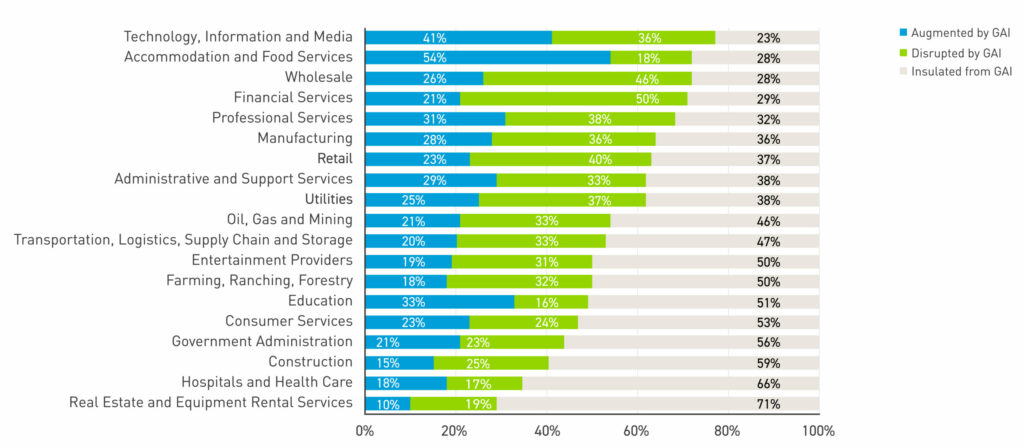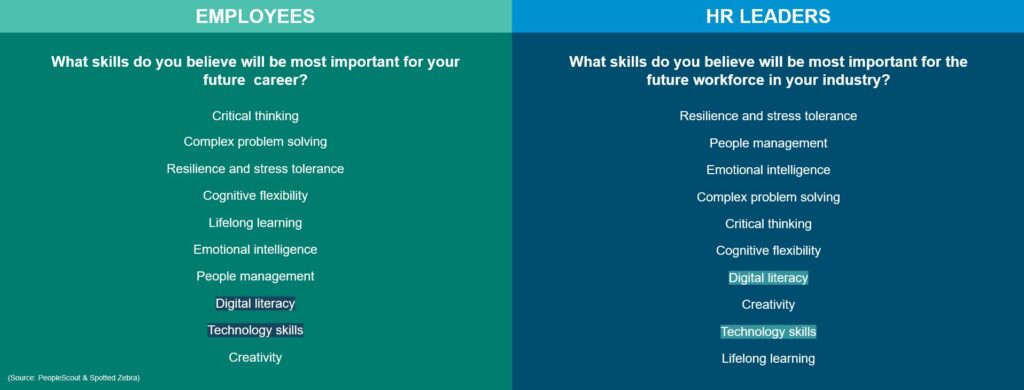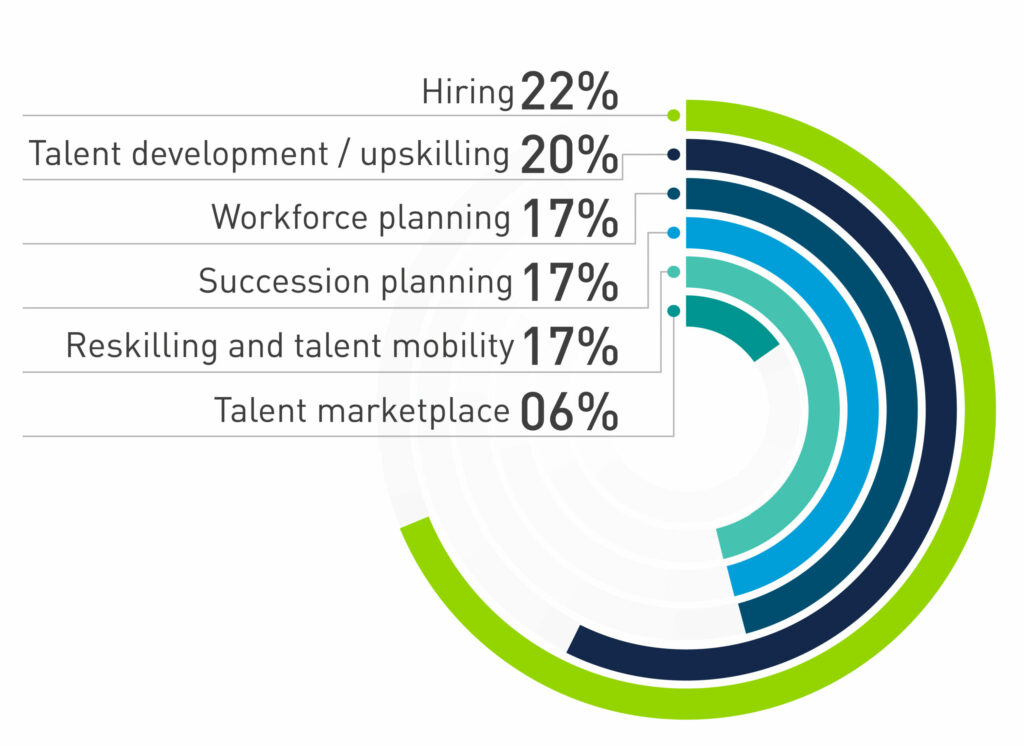By Simon Wright, Head of Global Talent Advisory Consulting
We are in one of the most transformative periods in the history of work. Between technological disruptions, societal shifts and global events, the talent landscape five years from now will likely look very different than it does today. However, even in times of uncertainty, we can discern key trends that will impact the way organisations source, recruit and retain talent.
As a leading talent solutions provider, PeopleScout has a unique vantage point to view the forces shaping the future of work. Based on our experience and industry insights, we believe there are eight core areas talent acquisition leaders should embrace in 2024 to up-level their strategic importance within the business.
1. Talent Leaders Will Look to New Models to Ride the Economic Waves
The power balance has now shifted back to the employer amidst a tight labour market, fewer vacancies and a cost-of-living crisis. But if you think it’s time to pause investment in your talent programs, think again.
Talent acquisition teams shrunk during COVID-19 and then grew quickly as part of the bounce back only to shed jobs again this past year. With continued uncertainty, TA leaders must showcase the value they bring to business by minimising the impacts of economic fluctuations.
It’s time to leave behind the boom and bust and embrace agility through a strategic approach to workforce planning and forecasting. Talent solutions like recruitment process outsourcing (RPO), including modular RPO solutions, offer responsiveness to help stabilise operational delivery amidst unpredictable economic waves.
2. Business Transformation Will Shape the Workforce
The specific skills and capabilities companies need are shifting rapidly, which means the jobs and roles employers need to fill are changing too. According to McKinsey research, one-third of new jobs created in the U.S. in the past 25 years were types that barely existed previously, particularly in high-demand areas like data analytics, software development and renewable energy. According to Totaljobs, despite a general slowdown in hiring, the demand for green jobs continues to go up, skyrocketing by 677% between 2019 and 2023.
However, this business transformation is being hampered by the lack of talent and relevant skills. Economic, social and labour market changes are evolving faster than workforce training and development systems can keep pace. There simply aren’t enough workers with experience in emerging fields and new technologies.
TA leaders must work proactively to build the reputation and influence of their employer brand with potential talent now—ahead of the hiring they need to do in the future. This means being able to recruit the best talent in the market, not just the best talent in your pipeline. Investing in candidate nurturing and employer branding strategies now will ensure organisations can hire first—and fast—when the time comes.
3. Employees Will Continue to Reevaluate Their Relationship with Work
TA leaders must be the eyes and ears for their organisation, tuning in to the candidate market and shaping the employer value proposition (EVP) to meet the changing needs and expectations of candidates. Today’s employees are demanding more, and the one-size-fits-all EVP approach must evolve to keep up.
Organisations that refresh their EVP with a more human-centric approach that recognises employees as people, not just workers, will go beyond traditional offerings to provide exceptional life experiences that match employee needs. Delivering a positive emotional connection will be crucial for improving retention, overcoming the productivity vacuum and attracting quality talent in 2024.
4. Data Will Be the Key to Overcoming Talent Scarcity
The labour market has shrunk due to the retirement of Baby Boomers, and companies face an enormous brain drain of institutional expertise. Not only is the upcoming population smaller and not replacing the Boomers who are leaving the workforce, but they lack the some of the soft skills of the departing generation. With this double depletion at play, organisations will need to work hard to attract and train Gen Z in order to keep their workforce development on track for the future.
Additionally, long-term illness, including lingering complications from COVID-19, has sidelined many working-age adults. The latest ONS data shows that the number of people economically inactive because of long-term sickness is now over 2.5 million in the UK alone.
The key to reducing the impact of talent scarcity in 2024 is data. It’s time for TA leaders to treat talent intelligence as business intelligence, bringing it to the C-suite to drive decision making and inform strategy. Organisations must leverage data to understand both internal and external talent pools, maximising ROI on talent attraction and retention efforts.
5. Skills-Based Practices Will Take Centre Stage
In order to keep pace with changing roles and dwindling talent pools, leading organisations are taking a proactive and holistic approach to adapting their workforces. They are investing in upskilling and reskilling programs while also leveraging RPO partners to find professionals with the most in-demand and future-proof skills.
More organisations will look to expand candidate pools and tap into diverse skill sets through skills-based recruitment. To do this, organisations must evolve their candidate assessment practices to focus on skills rather than credentials or pedigree. We’ll see more organisations follow the likes of Google and drop their university degree requirements. This will have the added benefit of promoting greater diversity, equity and inclusion (DE&I) in the workplace.
6. Internal Mobility Will Receive Big Investment
More than a third (36%) of HR professionals surveyed identified employee retention as a priority in 2024. Internal mobility will become the key to retention as well as filling open roles and skills gaps. Focus will shift from building external talent pools to internal talent pools, putting methods in place to identify transferable skills that can be boosted to support business transformation.
We saw an uptick in labour hoarding in 2023 talent trends. In 2024, organisations must invest in transforming the skills of the workers they’ve kept on board in order to ensure they’re ready for what’s on the horizon.
In 2024, career moves won’t take a linear path but will weave across departments and disciplines, providing workers with variety and rewarding work. Organisations must train hiring managers to look at candidates, not just for their fit for a specific role, but for the value they can bring to the organisation.
7. Long Overdue Tech Upgrades Will Happen for HR
The Josh Bersin Company estimates the HR technology is a $250 billion market. 2024 will be the year of recruitment tech stack upgrade.
Organisations will look to capitalise on AI-powered features to do the heavy lifting so their teams can focus on more valuable recruiting activities. TA leaders should look to technology to augment human touches throughout the candidate experience, to identify opportunities for streamlining through automation, and to help them better interrogate data for a more agile resourcing model.
This is also an opportunity for TA leaders to demonstrate they can deliver digital transformation and deliver ROI from these investments. This has been a criticism of talent acquisition and HR in the past, and it’s time to dispel that narrative.
8. AI Fever Will Hit an All-Time High
And finally, it wouldn’t be a 2024 talent acquisition forecast without a mention of AI. Generative Artificial Intelligence (GAI) tools, like ChatGPT, were on the tip of our tongues in 2023. As organisations grapple with the ethics of AI, most will succumb to the transformative potential and begin to test and experiment with how AI can benefit their workforce and operations in 2024.
The role of technology will keep evolving within talent acquisition, but it’s primed to have a pivotal role in streamlining recruitment tasks and improving efficiency in everything from screening to assessments to interview scheduling.
Organizations should take a principled approach to leveraging AI and automation to augment recruiting, while ensuring human oversight and care for people remains central. Starting with a small project or two will clear the mist so you can see clearly where AI will add value to your recruitment tech stack and candidate experience.
The Importance of the Right Talent Partner to Help You Ride the Waves
The future of work holds exciting potential, but also some uncertainty. However, while individual trends are difficult to predict, TA leaders that embrace agility, skills practices and tech innovation will find themselves in a strong position to prove their value in driving business performance. As your talent partner, PeopleScout will be ready to support, challenge and inspire you for whatever lies ahead.
By staying on top of key shifts like these and working with an expert talent solutions provider like PeopleScout, companies can build workforces with the skills, mindsets and diversity of experiences to thrive in the next era of business.





